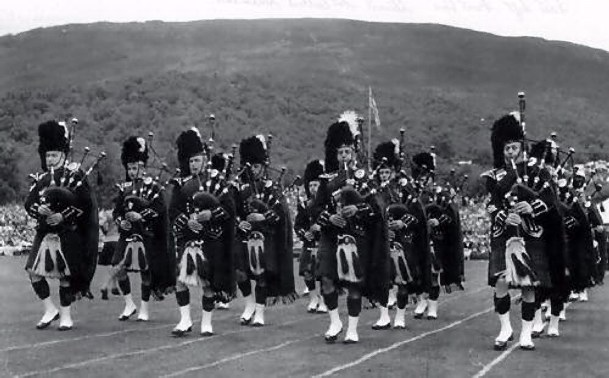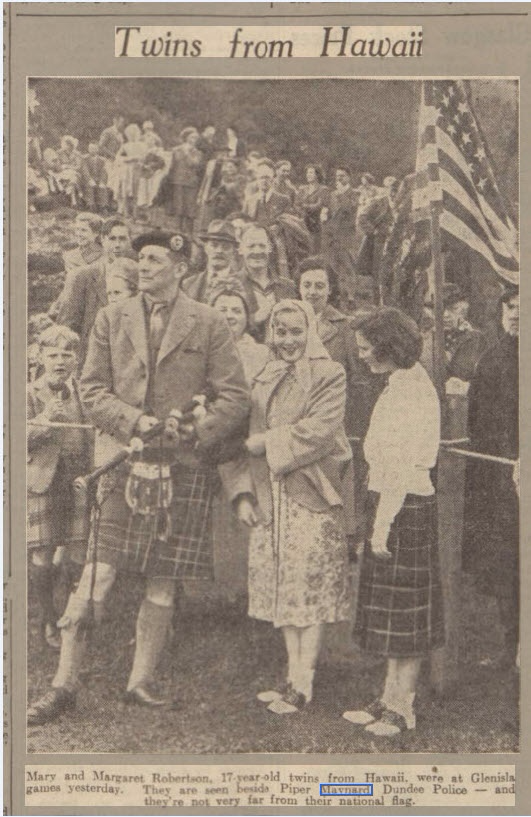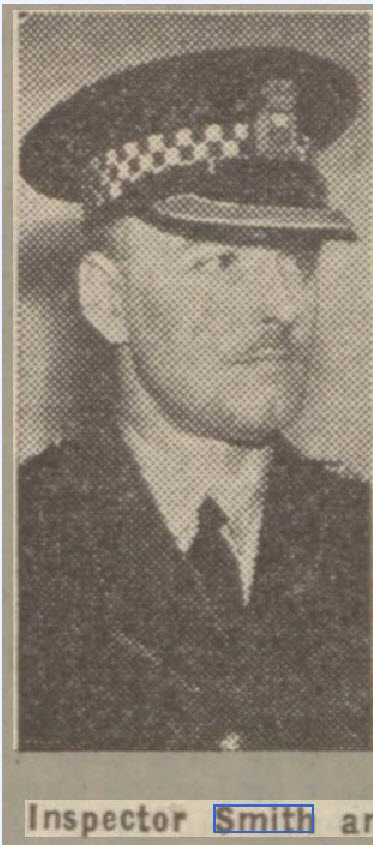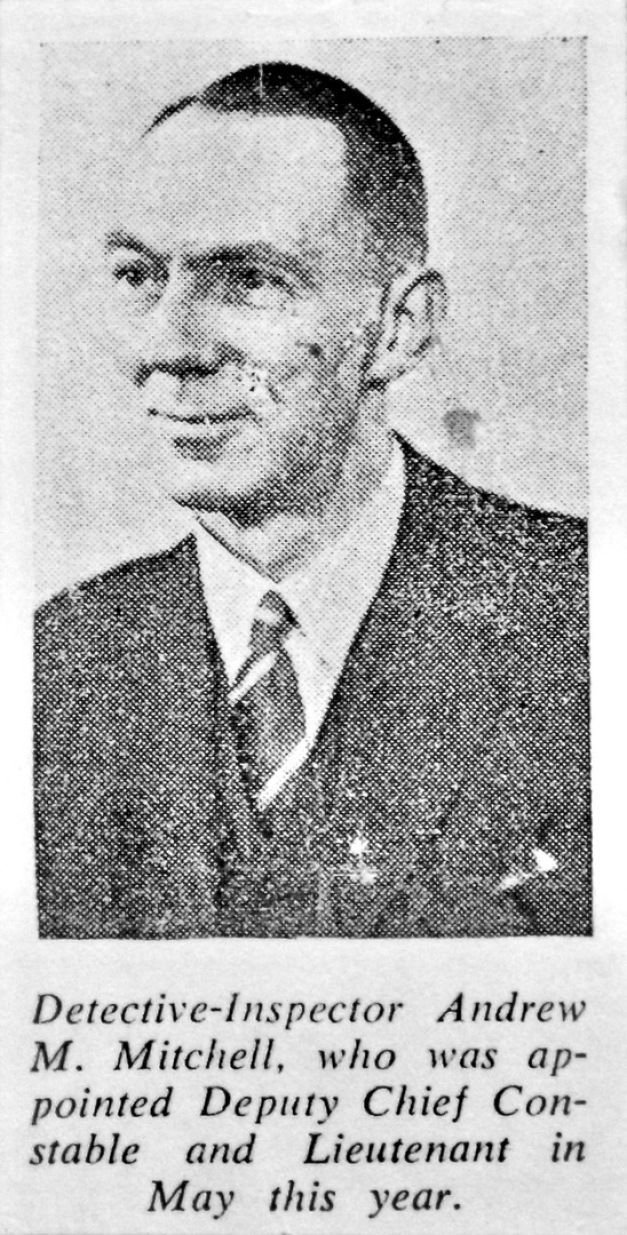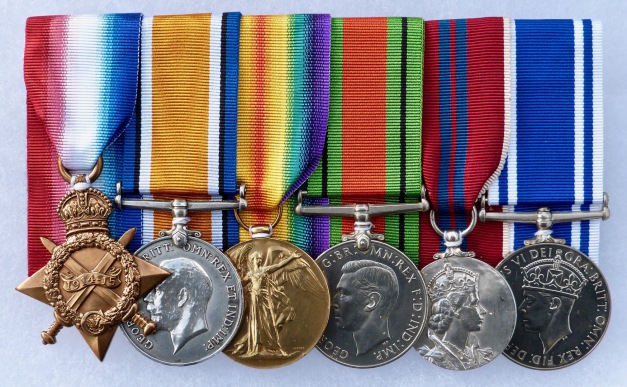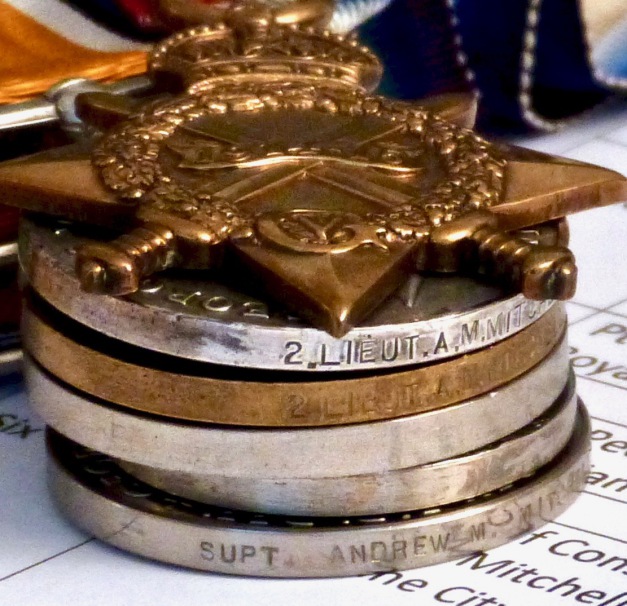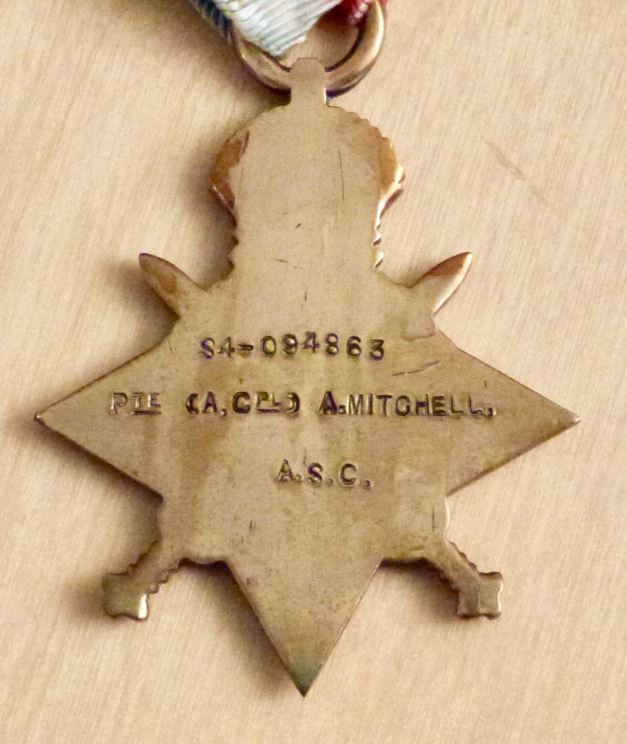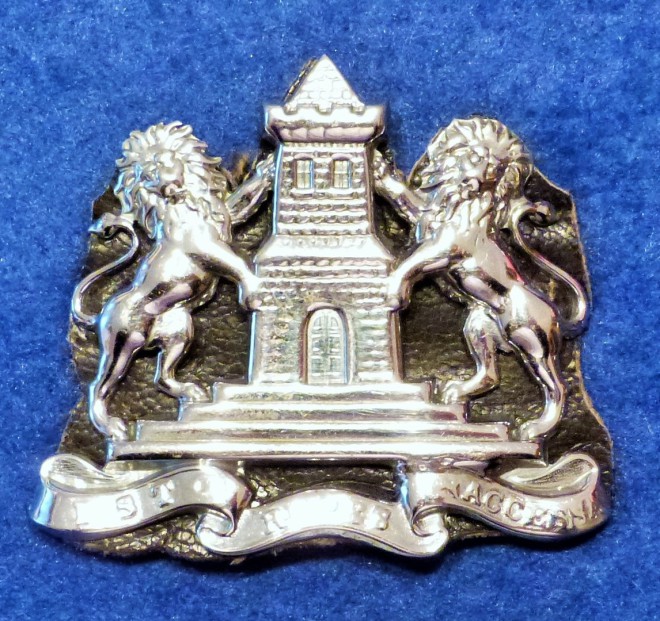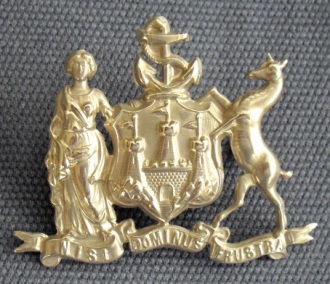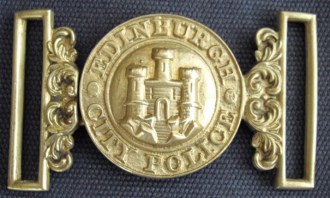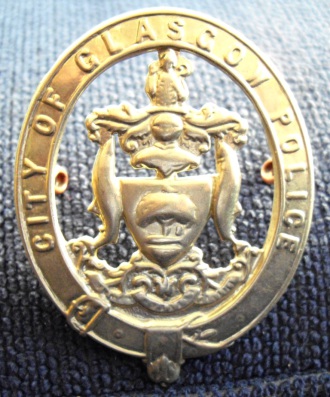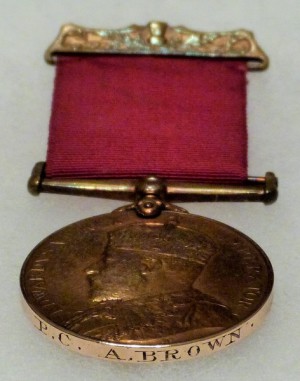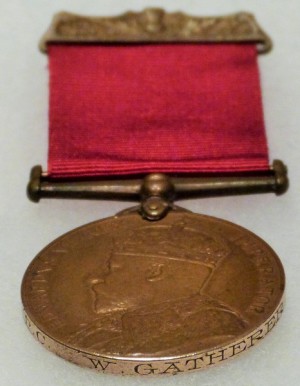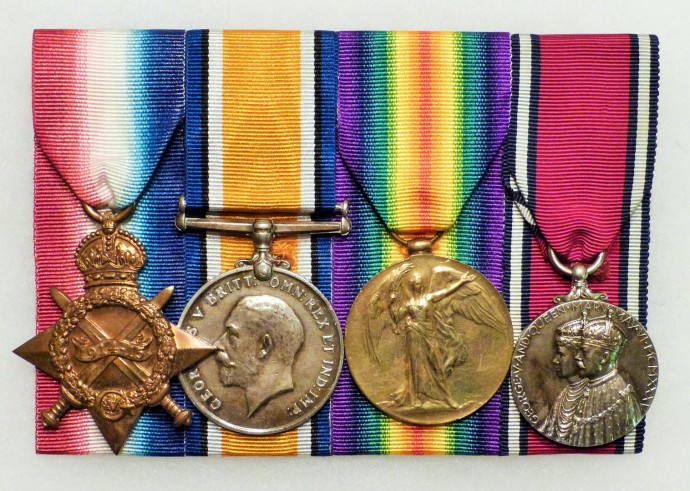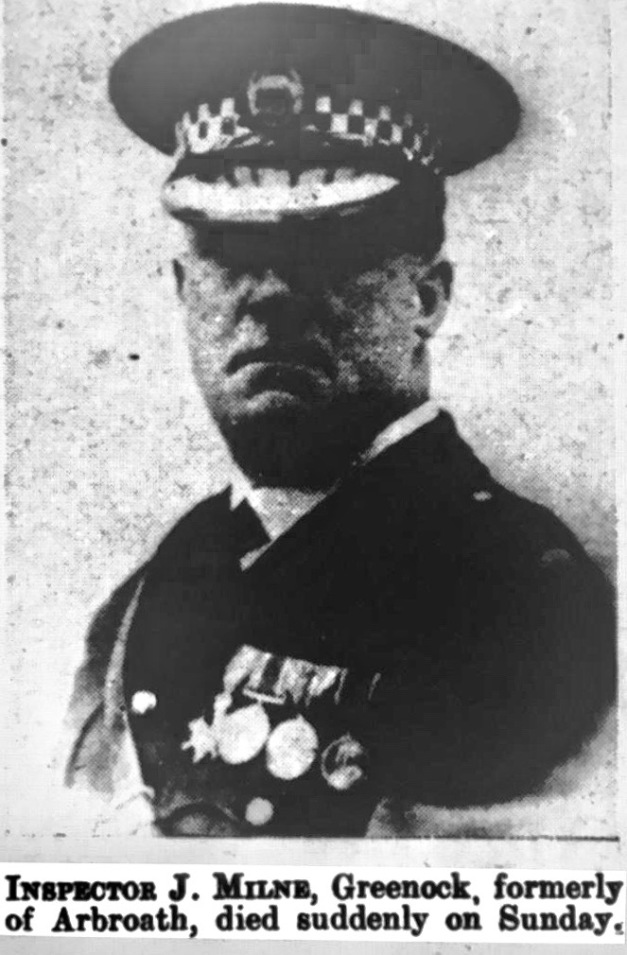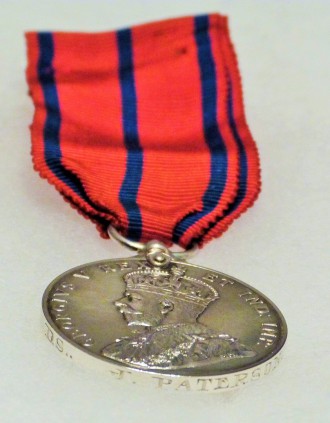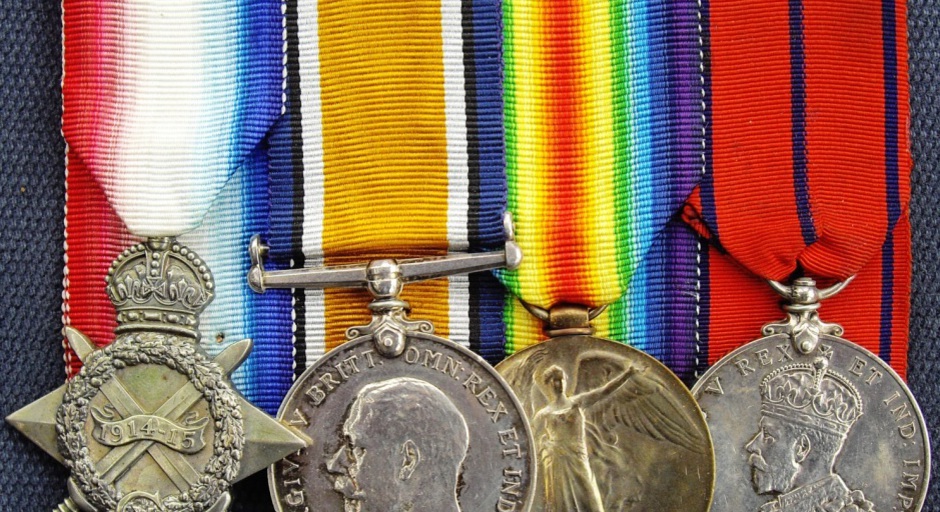
Scottish City & Burgh Police Force Medals (Aberdeen to Greenock)
|
Scottish City & Burgh Police Forces
(13 July 1900) "The Police Review and Parade Gossip" Page 333)
|
|||
|
Aberdeen
|
Dumfries
|
Hamilton
|
Paisley
|
|
Airdrie
|
Dundee
|
Hawick
|
Partick
|
|
Alloa
|
Dunfermline
|
Inverness
|
Perth
|
|
Arbroath
|
Edinburgh
|
Johnstone
|
Renfrew
|
|
Ayr
|
Forfar
|
Kilmarnock
|
Rothesay
|
|
Brechin
|
Galashiels
|
Kirkcaldy
|
Stirling
|
|
Broughty Ferry
|
Glasgow
|
Kinning Park
|
|
|
Coatbridge
|
Govan
|
Leith
|
|
|
Dumbarton
|
Greenock
|
Montrose
|
|
This is the list of Scottish City and Burgh Police Forces published in The Police Review and Parade Gossip of 13 July 1900.
Dundee City Police
Defence Medal, 1939 – 1945
War Medal, 1939 -1945
Police Long Service & Good Conduct Medal (EIIR)
PS Peter Maynard
Peter Maynard was born in Glasgow and served as a Piper in the Scots Guards before joining Dundee City Police. He also served in the Scots Guards in World War 2 and returned to serve again in Dundee City Police.
He later became a successful Pipe Major of Dundee City Police pipe band.
(This section will be updated when I finish researching Peter Maynard’s life.)
My thanks to Gordon Rogers for kindly providing me with the picture below and bigraphical details of Pipe-major Maynard.
Dundee City Police 1824 - 1975
The Defence Medal
The Police Long Service & Good Conduct Medal (EIIR 1954)
Dundee City Police
Chief Inspector Stanley James Smith
The early years
Stanley James Smith was born in Oakbank Terrace, Cherrybank in Perth on 23 January, 1910. His father was David Smith, a Police Constable in Perth City Police and his mother, Elizabeth Short or Smith.
The Census of 1911 records the following living at the address:-
|
Name (Age) |
Occupation |
Where born |
|
David Smith, (28) |
Police Constable (Perth City Force) |
Kincardineshire, Fordoun |
|
Elizabeth Smith, (32) |
|
Perthshire, Rhynd |
|
Andrew D. S. Smith, (3) |
|
|
|
Stanley J. Smith, (1) |
|
Perthshire, Perth |
The Census return shows that David and Elizabeth had been married for 8 years, had 3 children born alive, only 2 of whom were still alive at that date.
Dundee City Police
Stanley James Smith joined Dundee City Police as a Constable in May, 1932. His previous occupation was a Compositor and he had been living in Tibbermore, Perthshire.
He achieved his Ambulance Badges in 1932 and 1933.
On 19 September, 1936, in the Station Hotel, Perth, he married Mary Cecilia Halley, a Shorthand typist of Fues Road in Perth.
He was promoted to Sergeant in June, 1940 when his duties were dealing with Public Houses and in in 1944, Traffic Department. He was promoted to Inspector in January, 1950 and Chief Inspector in July, 1951.
He was awarded the Defence Medal in 1946 and the Police Long Service and Good Conduct Medal in 1954.
Stanley James Smith retired on pension from Dundee City Police in June, 1962 and his conduct was deemed “Exemplary”.
The end of the story
Mary Cecilia Halley or Smith died aged 66 in Dundee in 1971.
Stanley James Smith died aged 81 in Dundee in 1981.
(The details of Chief Inspector Smith’s career with Dundee City Police are courtesy of Police Scotland with special thanks to Alice Stewart.)
Dunfermline City Police 1832 - 1949
1914-15 Star
British War Medal
Victory Medal
The Defence Medal
The Coronation Medal 1953
Police Long Service & Good Conduct Medal (GVIR)
Dunfermline City Police
Fife Constabulary
Superintendent Andrew Mitchell Mitchell
Andrew Mitchell was born at Colton of Pittencrieff Farm, Dunfermline on 26 March, 1896. His father, Ebenezer Mitchell, a Flesher worked for his brother-in-law, John Marshall, the owner of the farm. Andrew Mitchell’s mother was Janet Marshall or Mitchell.
There is no middle name on Andrew Mitchell’s birth certificate.
The family were still living at Colton of Pittencrieff in the Census of 1901 when Ebenezer’s occupation is ‘Butcher’.
By the Census of 1911, the family were living at 48 Golfdrum Street in Dunfermline. Ebenezer was still a Butcher, he and Janet had been married 18 years, had six live births together, all six children of whom were still alive at the date of the Census.
Andrew was 15 and working as a Butcher.
On 8 August, 1914, according to his Personnel Record in Dunfermline City Police, Andrew Mitchell Mitchell was appointed as a ‘Temporary Additional Constable’ for the duration of the First World War. However, on 21 May, 1915, he was “Granted leave of absence to join the Army for the duration of the War.” The entry is signed by “George Bruce, Chief Constable”.
From his Army record, he enlisted the same day in the Army Service Corps (later to become the Royal Army Service Corps) as Private No. S4/094863 with the trade of Butcher.
He was posted to France arriving on 16 December, 1915. He later served in the Royal Engineers and the Labour Corps in France.
According to the record of Special Constables appointed to Dunfermline City Police on 10 May, 1915, “Ebenezer Mitchell, a Labourer (in H.M. Dockyard, Rosyth) 47 and 5’ 9”” of 48 Golfdrum Street, Dunfermline” was issued with “1 baton, 1 whistle and chain, 1 armband and 1 copy of instructions” for which he signed his name in the register.
Andrew M Mitchell was commissioned as a 2nd Lieutenant in the Labour Corps on 16 April, 1918.
An entry in his Police Personnel Record dated 21 December 1918, states: “While still serving in the (?) Army and having attained the rank of Lieutenant, he resigned his appointment as a Temporary Additional Constable.” This entry is also signed by “George Bruce, Chief Constable”.
Andrew Mitchell’s Medal Index Card (MIC) confirms his entitlement to the 1914-15 Star, British War Medal (BWM) and Victory Medal (VM). The 1914-15 Star is confirmed in Medal Roll RASC/5B4/3594 with the correct service number but the rank is shown as Sergeant. His entitlement to the BWM and VM are confirmed in Medal Roll Labour Corps Off/225/194 where his rank for both medals is 2nd Lieutenant.
The next entry on his Police Personnel Record dated 20 January, 1920 states: “Appointed to Permanent Force on this date. Service as a Temporary Constable to count as of 8 August, 1914 (Signed) George Bruce, Chief Constable.”
According to his MIC, Andrew Mitchell applied for his medals on 12 September, 1921 when his address was '115 Chalmers Street, Dunfermline, Fife'.
On page 10 of 'A Pictorial History of Fife Constabulary' (Published in 1999 by Fife Constabulary to celebrate the amalgamation of the three previous forces in 1949) is a picture showing the Dunfermline City Police in 1911. The box below shows a direct quote from the booklet:
|
“Dunfermline City Police C. 1911. With the extension of the Burgh boundary that year, Which included H.M. Dockyard, Rosyth, 2 Constables were added to the strength of the Force making a total of 1 Chief Constable, 1 Inspector, 2 Sergeants, 2 Acting Sergeants and 17 Constables.
The latter were increased by another 7 officers with the commencement of hostilities in 1914. Three Temporary Constables were recruited to the Regular Force for the period of the war and 350 Special Constables were also enrolled to assist the Regulars.
Twelve Dunfermline men served in the Army, and one in the Navy, with their jobs left open for them to return after the war ended.
All of those on active service subsequently returned to duty with the exception of PC Thomas Lothian who was killed in action in 1917.”
|
On 1 July 1921, Andrew Mitchell, (25), Police Constable, of 50 Golfdrum Street, Dunfermline, married Jane Gammie Rankine, (21), Saleswoman, of 31 Brucefield Avenue, Dunfermline.
Andrew's parents were Ebenezer Mitchell , a Dock Labourer and Janet Marshall or Mitchell. Jane's parents were Peter Rankine, Flesher and Jane Ross Paterson or Rankine.
So far, I have not found his complete police career history but know from the newspaper cutting above that around 1942, Andrew M Mitchell was promoted to Lieutenant and Deputy Chief Constable after John Ritchie Inch became Chief Constable of Dunfermline City Police that year. (See below for update)
In 1949, Dunfermline City Police and Kirkcaldy Burgh Police amalgamated with Fife County Police to become Fife Constabulary.
The Citizen newspaper of Saturday 7 January 1950 reported the following:
"It has been announced that there are to be four Divisions in Fife Constabulary.
They are:- A Division, consisting of Kirkcaldy Burgh and Methil Sub-Division. B Division, comprising Cupar, St Andrews and Leven Sub-Divisions. C Division, comprising Cowdenbeath, Lochgelly and Burntisland Sub-Divisions, and Di Division, comprising Dunfermline Burgh and Dunfermline Sub-Division...
...and Chief Inspector Andrew Mitchell who has been promoted Superintendent as from 5th January, will be in charge of D Division.
...Chief Inspector Mitchell joined Dunfermline police in 1914 when he was 18. He joined the Army a year later and was demobilised in 1919 with the rank of Captain. Most of his career has been spent in CID. He was promoted Detective Sergeant in 1933, Detective Inspector in 1940, and Chief Inspector and Deputy Chief Constable in 1946. He has been in charge of Dunfermline City section of Fife Constabulary since the amalgamation of county and burgh forces in May."
I have also confirmed, courtesy of Police Scotland and Fife Council Archives that Superintendent Andrew M Mitchell retired on Pension from Fife Constabulary on 26 March, 1956.
Jane Gammie Mitchell, (64), died in the Northern Hospital, Dunferemline, on 24 May 1964. Her usual address was 14 Aberdour Road, Dunfermline. Her widower, Andrew Mitchell, registered her death.
Andrew Mitchell, (78), Police Superintendent, (Retired), of 14 Aberdour Road, Dunfermline, was found dead there on 24 April 1974. His son, 'A. Mitchell', registered his death.
I am grateful to the staff of Fife Council Archives and Police Scotland for their assistance in researching Andrew Mitchell’s police career.
Edinburgh City Police 1805 - 1975
To see all Edinburgh City Police Medals for officers named
‘McDonald’ to ‘Wickham’ please click here.
Glasgow Police, City of 1800 - 1975
To see all medals for City of Glasgow Police officers, please click here.
Govan Burgh Police 1864 - 1912
King Edward VII Police (Scotland) Medal 1903
Govan Burgh Police
PC Alexander Brown
Alexander Brown was born in Kintore in the County of Aberdeen on 10 April, 1872. His father, Alexander Brown, was a Farm Labourer and his mother’s maiden name was Ann Begg. His parents were married in Kemnay, Aberdeenshire on 18 March 1869.
He was a Farm Servant living at Monymusk in Aberdeenshire in the Census of
1891.
Alexander Brown joined Govan Burgh Police on 31 May, 1896, aged 24. He was 6’ 2” tall.
In the 1901 Census, he was living at 41 White Street, Govan as a Boarder along with another Govan Constable, James Begg whom I believe is his cousin.
He progressed through the pay scales in the usual way and the only Discipline matter recorded against him states:
“December 2, 1905.
(1) Having while off duty on 25 November last along with Sergeant Smith, formed part of a noisy and disorderly crowd amongst whom several fights took place;
(2) Having same date, been insolent and
insubordinate towards Superior Officers in Plantation Police Office.”
He was dismissed for these Discipline Offences on 2 December, 1905.
The next entry on his Personnel Record states:
“Died suddenly in Rutland House from an attack of Pleurisy and Pneumonia on 17 February 1905.
Total deductions of £15.4/8d towards Superannuation Fund remitted to James (sic) Brown, his father at Glenhead, Kemnay, Aberdeenshire, his father.”
He died in the Rutland Model Lodging House, Govan Road, Govan. His occupation was “Lodging House attendant”. His death was registered by his cousin, James Begg, the same man he shared lodgings with in 1901.
I also believe the first name of the father on the Personnel Record is a
mistake that confuses the cousin and the father.
This is only medal entitlement from his police service.
It is possible that this medal was to PC Archibald Brown of Fife Constabulary, the only other ‘PC A. Brown’ I have found serving in 1903 but I now believe it more probable that Alexander Brown is the correct recipient.
King Edward VII Police (Scotland) Medal 1903
Govan Burgh Police
PC William Gatherer
According to Page 161 of the Register of Govan Burgh Police, William Gatherer was born 23 February, 1880 at 12 School Hendry Street in Portsoy in the County of Banff.
He joined the Govan Burgh Police on 4 November, 1902. His previous occupation was a Craneman and he was single.
He was living at 8 Russell Street in Govan.
His record in the ‘Register of the Burgh of Govan Police Force’ is quite brief. It consists of the following entries.
Under ‘Appointments, Promotions, Reduction, Transfer, Resignation or Dismissal’ are the following entries:
|
Date |
Particulars |
|
November 4, 1902 |
Appointed 3rd Class Constable
|
|
April 29, 1903 |
Pay increased to 26/3d (£1.31.5p approximately) per week
|
|
November 11, 1903 |
Pay increased to 27.5d (£1.37p approximately) per week
|
|
January 9, 1904 |
Dismissed
|
Under ‘Offences or Meritorious Services’, the following is the only entry recorded:
|
Date |
Particulars |
|
January 8, 1904 |
Charged with having used obscene and insulting language towards Lieutenant Macintosh. – Dismissed
|
The final entry on his record states that “His total deductions towards his Superannuation (Pension) of £1.6/8d were returned to him.”
This medal is worthy of further research just to find out what happened to William Gatherer. Did he join the army in WWI? Did he emigrate? When and where did he die?
This is a very scarce attributed medal to Govan Burgh Police, a police force long since amalgamated in to the City of Glasgow Police.
Greenock Burgh Police 1800 - 1967
1914-15 Star
British War Medal
Victory Medal
King George V Silver Jubilee Medal,
1935
Greenock Burgh Police
Inspector James Smith Milne
James Smith Milne was born on 25 March, 1891 at 17 Lochlands Road, St Vigeans, Arbroath in the County of Angus. His father was James Milne, a Flax Warehouseman and his mother, Mary Ann Ross or Milne. His parents were married on 31 December, 1884 at Arbroath when his father’s occupation was ‘Journeyman Joiner’ and his mother, a’ Reeler in Flax Mill’.
The family were still living at 17 Lochlands Road in the Census of 1891, James being the youngest of three boys.
In 1901, the family were still at 17 Lochlands Road but James now had a younger brother. His father’s occupation was now ‘Railway Goods Porter’.
James Smith Milne began working for the Dundee and Arbroath Joint Railway in 1907. Their head office was at Dundee Tay Bridge Station, although James worked near Elliot in Angus, a small coastal hamlet on the western outskirts of Arbroath.
James Milne (senior) died on 1 January, 1911 I Arbroath Infirmary. His son William Milne registered his death.
In the 1911 Census, the family with Mary Milne as head, were living at 9 Lochlands Road in Arbroath and James Smith Milne was a ‘Signalman – Railway’.
On 23 May, 1913, James Smith Milne applied for appointment as a Constable in Greenock Burgh Police. He completed his application in his own neat handwriting and his description was confirmed at Arbroath Police Station by “Inspector R Pyper’ as 5’10”, dark brown hair with a fresh complexion.”
Inspector Pyper also signed to confirm the veracity of the references James Smith Milne had provided regarding his suitability for the office of constable.
On 9 June, 1913, He was appointed a Constable in Greenock Burgh Police.
At Greenock, on the 9 September, 1914, James Smith Milne, a Police Constable aged 23 years and 150 days, enlisted in the Scots Guards as Guardsman Number 10522.
During training in England, he married Davina Moncur Ramsay on 20 November, 1914.
On 27 December, 1914, James Smith Milne was posted to France with the 1st Battalion Scots Guards as a ‘Replacement’. The Battalion Regimental War Diary (WO 95-1263) records the event in the margin on 31st December, 1914 as follows:
|
“9th Reinforcement. Capt. J. S. Thorpe, Lt. G.V.F Monckton and 200 R and F (Rank and File).”
|
What followed then was a period of intense activity in and around La Bassee fighting the Germans in trenches sometimes no more than 100 feet away, the conditions of which are described in great detail in the War Diary.
James Smith Milne was wounded by shell fire and captured by the Germans on 25 January, 1915. The circumstances are recorded in the Regimental War Diary as shown below:
|
“Jan 25th |
At 6.30 am a German deserter reported that an attack was going to be made in ½ an hour. Bombardment first and then our trenches were to be blown up by previously made mines. After an hour, all happened as deserter had said. 5 RF and 40 LF got away. – Their story is as follows – The Germans first shelled them, then got out of their trench and attacked half right, then threw bombs in, got to the tip of the parapet and shot down into the trenches. The Germans afterwards swarmed up to the “Keep” where Major Romilly was. There they were checked and held. Reinforcements came up and a counter attack was delivered at 1 pm but did not retake much ground. Battalion was relieved at 4 pm by Sussex Regiment.”
|
The next day, the Regiment marched back to Bethune and the total casualties were recorded in the style of the time with only officers names recorded, ‘Rank and File’ being simply recorded as the numbers shown below:
|
Killed. Lt. H.S.E. Bury (G. Gds. attached).
Wounded. 2nd Lt. J.A. Denny (G. Gds. attached).
Missing. Major A.C. Morrison-Bell Lt. G.V.F Monckton 2nd Lt. G.E.V. Crutchley 2nd Lt. A.H. Long (G. Gds. Attached). 2nd Lt. G.H. Fletcher (G. Gds. attached). 2nd Lt. J.C. Thompson (Artists Rifles attached). 2nd Lt. H.E. Weld (Artists Rifles attached).
Total casualties in the Cuinchy (La Bassee) District:
Killed Wounded Missing Officers 4 3 7 Other Ranks 27 120 235
|
James Smith Milne’s next of kin are recorded on his Army papers as his wife, living at Glenskinno near Dun by Montrose in Angus and his mother, Mary now living at 13 Duke Street, Arbroath.
His Army record confirms that his son, James Ramsay Smith Milne was born at Dun in 1915.
According to his Army record, he was held in a Prisoner of War Camp near Braunschweig in Lower Saxony, Germany in 1916 after his injury had healed in hospital. He was held from 25 January, 1915 until repatriation on 29 December, 1918.
He was finally discharged on 29 March, 1919 when he rejoined Greenock Burgh Police.
His Medal Index Card confirms his first date of entry to the France Theatre of War as 28 December, 1914 and his entitlement to the 1914-15 Star, British War Medal and Victory Medal. These are all recorded in the appropriate Regimental Medal Rolls for the Scots Guards.
He was commended on 19 October, 1923 for the arrest of a man for a housebreaking (burglary) at a butcher’s premises during a night duty.
James Smith Milne was promoted to the rank and pay of Sergeant on 12 May, 1925.
Sergeant James Smith Milne was awarded the King George V Silver Jubilee Medal in 1935 and this is also confirmed in the relevant Medal Roll.
The Glasgow Herald newspaper of 16 December, 1936 noted that:
|
“GREENOCK POLICE PROMOTIONS Inspector David Grant, who has completed 38 years’ service in Greenock Burgh Police, retires today.
Sergeant James Smith Milne has been promoted to succeed him, and Constable James K. Gray has been raised to the rank of Sergeant, and will continue on duty in the mechanical transport department.”
|
His promotion to Inspector is confirmed in his personnel record as of 16 December, 1936.
James Smith Milne, ‘Police Inspector’, (49), died in the Central Police Office, Dalrymple Street in Greenock on 26 January, 1941. His son James, registered his death.
According to the Greenock Telegraph of 27 January, 1941,
|
“Stop Press
Died on Duty
Death of a Police Officer
On of Greenock’s most efficient police officer(s) Inspector James Milne, 37 Prospecthill Street, collapsed and died while on duty last night.
Deceased was on the 6 p.m. till 3 a.m. shift, and at about nine o’ clock complained of feeling ill. He went to a room in the police buildings, and was later found dead there by Sergt. Louis Anderson.”
|
On 31 January, 1941, the Greenock Telegraph reported the following:
|
“Funeral of Police Inspector
The funeral took place privately to Greenock Cemetery on Wednesday (29 January) of Inspector James Milne who died suddenly at the Central Police Station, Dalrymple Street, on Sunday night.
The Police Force was represented by Lieut. Mitchell, Lieut. Finnie, Inspector Lemen and Inspector Mackay.
Inspector Milne, who was a native of Forfarshire, had a long record of service with Greenock Police.”
|
Mary Ann Ross or Milne, (82) died in Arbroath in 1945.
Davina Moncur Milne, (78), died in Greenock in 1968.
I am indebted to Neil Dickson, (Archivist) and especially Betty Hendry of the Watt Library of Inverclyde Council in Greenock for their much appreciated assistance in finding information on James Smith Milne's police career. Thank you for all your kind assistance.
King George V Coronation (Scottish Police) Medal, 1911
Greenock Burgh Police
DS Joseph Paterson
Joseph Grant, also known as Paterson, was born in Forres in the County of Elgin on 11 June, 1863. His mother was Marjory Grant and his father, Joseph Paterson.
In February, 1887 he was a Railway Pointsman working for the Dundee and Arbroath Joint Railway of 65 Commercial Street, Dundee and living at 12 North Erskine Street, Dundee with his uncle, Alexander Grant.
On 7 February, 1887, Joseph Paterson joined Greenock Burgh Police as a Constable.
In the Census of 1891, he was living at a Section House in the Police Station at Dalrymple Street, Greenock in Renfrewshire. There were 14 other Constables and 1 Sergeant in residence there that night.
He was promoted to the rank of Sergeant on 10 March, 1896, five years later he became a Detective Clerk and in 1903, he became a Detective Sergeant.
By the Census of 1901, Joseph was a Police Sergeant,
(36) and living as a Boarder at 18 Mearns Street, Greenock.
On 21 August, 1909, at Mid Anagach in Cromdale in the County of Elgin, Joseph Paterson, (46), a Detective, married Margaret Grant, (34), a Saleswoman.
Alistair Grant Paterson was born at Mid Anagach, Cromdale on 30 May, 1910. His father was Joseph Paterson, a Detective Sergeant and his mother, Margaret Grant or Paterson. The family’s usual address was 20 Murdieston Street, Greenock.
The family were still at Murdieston Street in the 1911 Census.
According to Page 368 of the August 2nd, 1912 edition of the Police Review and Parade Gossip, Detective Sergeant Joseph Paterson was one of only five officers in Greenock Burgh Police to be awarded the 1911 Coronation Medal.
Joseph Paterson retired from Greenock Burgh Police as a Detective Sergeant on 1 October, 1921 and moved back to Grantown-on-Spey.
According to an obituary in The Greenock Telegraph’ of 16 December, 1942:
“Returning to his native Strathspey he purchased a house and settled down in peace and comfort. But he still felt he could be of service to the community. He stood for the Town Council and was returned at the top of the poll. Later he was made a Magistrate and so well had he carried out his municipal duties that he was elected Provost (Mayor), an honour which he greatly appreciated.
Mr Paterson also served on the County Council, the Education Authority and other governing bodies…”
Alistair Grant Paterson, (22), died on 28 October, 1932 at Mid Anagach, Cromdale.
Joseph Paterson, (79), died on 11 December, 1942 at Homefield, Heathfield Road in Grantown-on-Spey in the County of Moray.
His wife, Margaret Paterson, (83), died on 31 December, 1938 in the Ian Charles Cottage Hospital, Grantown-on-Spey, her usual address being Homefield, Heathfield Road in Grantown-on-Spey.
This was DS Joseph Paterson’s only medal entitlement.
I am indebted to Neil Dickson, (Archivist) and especially Betty Hendry of the Watt Library of Inverclyde Council in Greenock for their much appreciated assistance in finding information on Joseph Paterson's police career and his life after retirement. Thank you for all your kind assistance.
To navigate around the site, please click on the links below.
To return to the Home Page, please click here.
To return to Scottish County Police Forces, please click here.
To return to Edinburgh City Police, please click here.
To return to City of Glasgow Police, please click here.
To return to the Edinburgh City Police Gallery, click here.
To return to the Forces that became Lothian and Borders Police Gallery, please click here.
To return to Medals for Sale, please click here.
